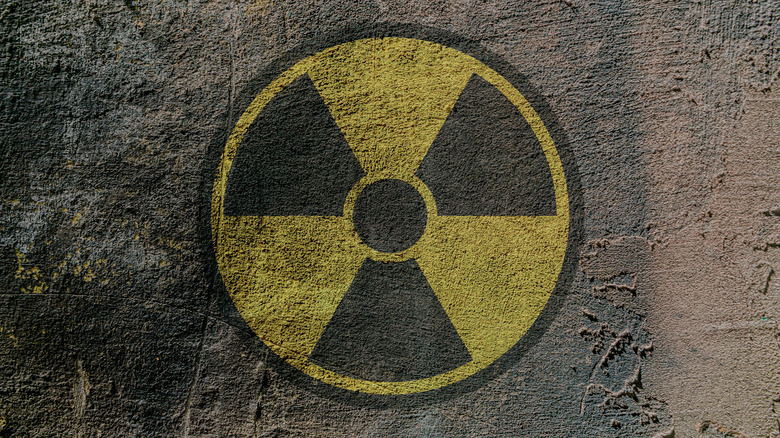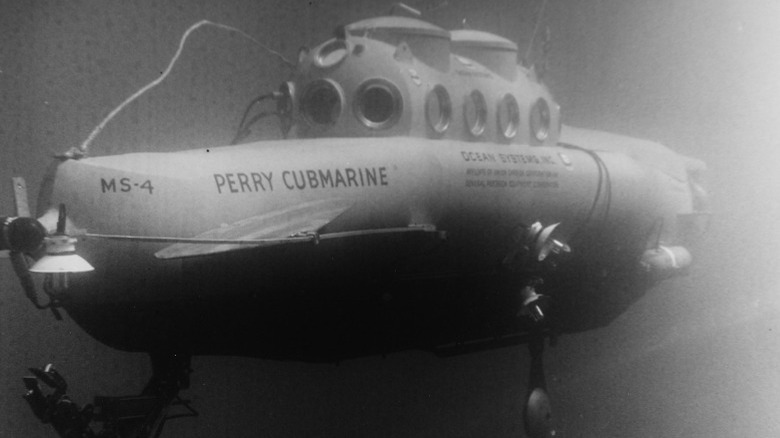For Almost 3 Months In The 1960s, The United States Lost 4 Nuclear Bombs In Spain
The small fishing village of Palomares in sunny southern Spain was once the site of a freak Cold War accident — an accident that some believe has since caused horrific health problems and numerous deaths (via The New York Times).
In 1966, an American B-52 Stratofortress bomber was preparing to refuel in Spanish airspace when it accidentally collided with the fuel tanker in mid-air. Crashing into each other at 31,000 feet, both planes burst into flame after being drenched in flammable liquid (via Insider). The resulting catastrophic explosion killed seven people, including everyone on the tanker and three men from the bomber. As the wreckage rained down in a doomsday-like fashion over the Spanish town below, the craft's dangerous cargo — four atomic bombs — also plunged to the earth.
Far out to sea, Spanish fishermen rescued several survivors. These men managed to jump out of the plane in time. Sadly, not all the Americans who parachuted out made it. One witness described watching two dead men drifting to earth still attached to their shoots, one of whom was severely maimed by the explosion. Many others recall watching shrapnel and body parts rain down over the town (via the BBC).
A flawed clean-up
The bombs that the B-52 bomber carried were 100 times more powerful than the ones detonated in Japan (via Insider). Unsurprisingly, the American government reacted quickly. According to BBC News, 700 Americans were mobilized to find the missing bombs in a massive operation that involved numerous scientists, naval personnel, and divers (via ABC News). Additionally, tiny subs called "cubmarines" were employed (as pictured above). The first three bombs were found within 48 hours, but the fourth remained elusive. It was finally found at the bottom of the Mediterranean Sea after 81 days of searching.
While safety mechanisms prevented a full-blown nuclear blast, two of the bombs split open, throwing radioactive plutonium into the air, and contaminating nearby villages (per The Brink). According to The Guardian, in an attempt to preserve the health of the villagers, 1,700 tonnes of radioactive topsoil was removed and shipped to the U.S.
Although at the time, both General Franco and American Ambassador Angier Biddle Duke swam in the waters at Palomares to reassure the public it was safe. The operation is still heavily criticized for failing to protect both U.S. and Spanish citizens (via The Guardian). Nobody involved in the operation was given protective clothing of any kind, and one man even picked up radioactive material with his bare hands.
Suspicious health issues
Today, many people suspect that the plutonium leaks from the bombs made them very ill. According to The New York Times, in the weeks following the clean-up, many of those involved fell sick, reporting headaches, strange growths, and joint pains. Despite denials by the U.S., reports from the time show that the men who cleared up the toxic material were contaminated. The tests were ultimately deemed to be faulty and thrown away. Just six years after the explosion, a Spanish boy died of what was described as blood cancer (via ABC News). In the U.S., at least 40 of the Americans involved in the search have developed various cancers (via Insider).
Removal of topsoil was also not enough to eliminate the contamination. A study performed in the 1990s showed that the ground was still dangerously radioactive, causing the Spanish government to finally seal off the area in 2003 (via The Guardian). According to Insider, this accident was not even a one-off. Many nuclear bombs have been accidentally dropped at one time or another, with some never recovered.


